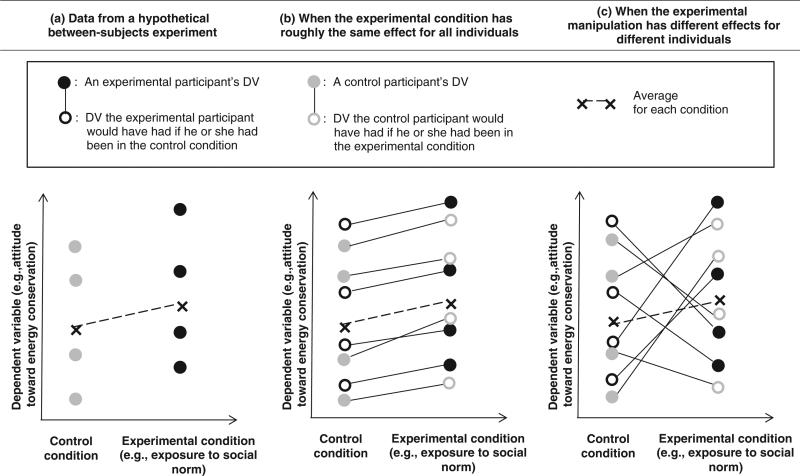Fig. 1.
The limitations of a between-person design. In a typical between-person experiment, by definition a participant is only in one condition. Thus, it is not known how the participant would have responded to the other experimental condition(s). Panel (a) depicts possible results of a between-subjects experiment. Panels (b) and (c) depict two hypothetical scenarios with regard to what would have been obtained if each participant were observed in the other condition. Panel (b) represents a possibility in which the effect of the manipulation is relatively uniform across all participants. In contrast, Panel (c) represents a possibility in which the manipulation has relatively large positive effects for some individuals while it has relatively large negative effects for the others. Note that the two possibilities are identical in the observed data; an independent groups t-test would yield exactly the same positive effect of the manipulation for the two cases. Thus, an experiment using a between-subjects design is not able to distinguish (c) from (b).

